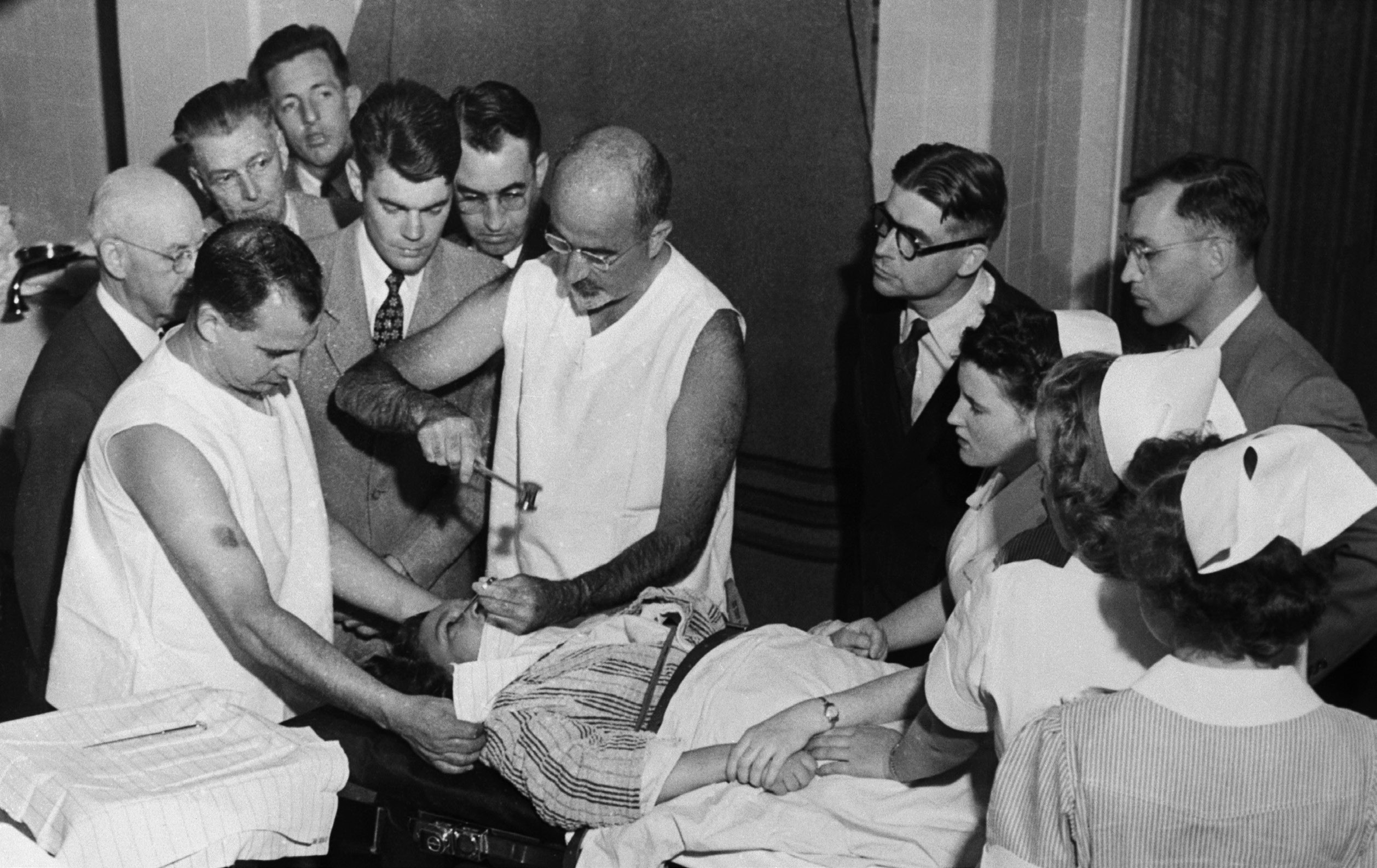
Lobotomy is a form of brain surgery designed to treat mental illness. It was developed in the late 1930s (see ‘The basis for lobotomies’ on page 15) and popularised in the 1940s to 1950s. At that time there were few effective treatments for mental illness, and mental hospitals were overcrowded with patients who were often resident for years and even lifetimes. A number of physical therapies were invented at this time, including electroconvulsive shock therapy and brain surgery.
Lobotomy was performed across the Western world, but was particularly popular in the USA, where neurologist and pathologist Walter Freeman was a passionate supporter of the procedure. He developed the transorbital (or ice-pick) lobotomy, which involved inserting a sharp instrument through the patient’s eye sockets in order to detach brain fibres in the prefrontal lobes. This development transformed lobotomy from major brain surgery into something that could potentially be conducted in a doctor’s office.
Your organisation does not have access to this article.
Sign up today to give your students the edge they need to achieve their best grades with subject expertise
Subscribe



